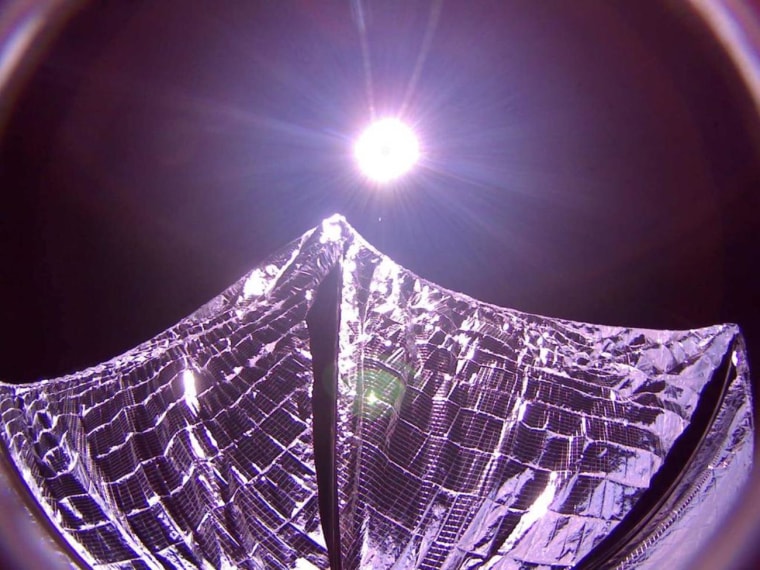Two days after the LightSail spacecraft started spreading its experimental solar sail, the Planetary Society unveiled an orbital selfie showing the sail sections partially deployed, with its power source in the background far away — 93 million miles far away.
"The future of space travel," Bill Nye the Science Guy, the nonprofit society's CEO, declared Tuesday in a tweet.
The photo was taken by one of the webcams aboard the solar-powered craft. LightSail was launched on May 20 as a secondary payload aboard an Atlas 5 rocket, with 344 square feet (32 square meters) worth of reflective plastic folded up inside a box the size of a loaf of bread. After a roller-coaster series of outages and revivals, it began unfolding its sail on Sunday.
Related: LightSail Shines Spotlight on Solar Sails
The point of this mission, known as LightSail-A, was to find out whether the deployment mechanisms work. The Planetary Society says the mission "successfully completed its primary objective," but engineers will try to spread out the spacecraft's 13-foot (4-meter) booms farther to make the the sail material tauter.
"It's not quite fully deployed," the Planetary Society's Emily Lakdawalla observed on Twitter. "Will LightSail finish deploying before the atmosphere drags it down? Wait and see..."
LightSail-A's orbit ranges in altitude between 215 and 399 miles (346 to 642 kilometers). Such an orbit too low to allow for actual solar sailing, in which the pressure of sunlight can be used to propel and steer a spacecraft. That feat is planned for a follow-up mission, LightSail-B, which is due for launch next year.
Previous spacecraft, such as Japan's Ikaros solar sail, already have demonstrated that the technology works. Eventually, solar sailing could provide a way to send space probes to the far reaches of the solar system and beyond — perhaps even to a galaxy far, far away.

